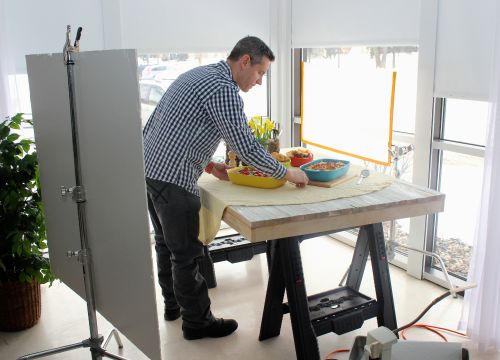Whether you’re promoting a fancy new recipe, showing off your restaurant’s signature dish, or extolling the virtues of some exotic ingredient, there’s just one rule in food branding: it has to look good. Food, more than almost any other commodity, can virtually sell itself, simply by making the audience’s mouth water until they want whatever’s being shown. But that’s only if it looks perfect. The vegetables need to be fresh, the cheese needs to be gooey, and the meat needs to be seared to perfection.
When your audience makes or orders that dish for themselves, chances are it won’t look that perfect. So how do you get it that way for your content? It’s called food styling: arranging food so that it looks as good and as fresh as possible. Here’s what you need to know about incorporating it into your own brand.
Styling Your Brand
First of all, food styling is much more involved than you realize. Arranging things on a plate so they look pretty is part of it, but it doesn’t stop there. For one thing, photo and video shoots can take hours, and food needs to look just as fresh at hour 5 as it did at hour 1. This often means not just one food stylist, but a whole team of them, doing constant touch ups, sometimes every couple of minutes.

Back in the day, food styling used to render the food inedible. It would be covered with shellac or motor oil or any number of other products that gave it the right appearance on camera. These days, many brands consider that to be dishonest, and instead take pride in shooting only food that’s actually edible.
Of course, there are still tricks that can be used to make food look preternaturally perfect without making it unsafe to eat. Edible glazes are often used, brushed over foods to give them a healthy sheen.
Styling Ingredients
One of the latest trends in food content is montage-style recipe videos. In two minutes, you see all the steps required to make this particular dish, ending with a close-up of the mouth-watering finished product. This means that not only does the ending dish need to look good on camera, so do each of the individual ingredients.
The vegetables you chop not only need to look fresh, but the slices need to be uniform in size and shape. The raw chicken needs to be browned perfectly, and the tomato puree you add to it needs to bubble invitingly in the pan. Every step needs to be styled to create that mouth-watering effect. Furthermore, since this is video, how the food moves as it’s being prepared is important as well. And don’t forget the money shot: serving up a portion of whatever’s been made, dipping a fork or spoon into it, and showing what the finished product looks like in all of its ooey gooey goodness.
With that in mind, there’s also such a thing as being too perfect. The purpose of these videos is to show your audience what they can do at home with a few simple ingredients. If you show them something that looks like it came out of a food magazine or a five-star restaurant, or film some complicated but unnecessary cooking maneuver because it looks cool, you’ll turn your audience off and destroy the image that this is something anyone can make. Make it look delicious, but also make it look realistic. The two don’t have to be mutually exclusive.
That’s the key to food styling for your brand: whether you’re selling a particular dish or demonstrating to your audience how to make it on their own, show them that it’s real: something they can honestly enjoy, just as it appears on camera. There are plenty of food styling tricks you can use to punch up your dishes, but the best ones are the ones that remain true to the products and the dishes you make.
